Despite medicine cabinets’ utilitarian function, selecting one may not be as straightforward as you might think. Recessed cabinets look great but might require more work than you bargained for. Wall-mounted options are easier to install but can take up much-valued space. Here’s help for figuring out which approach and style are right for your bathroom.
Bill Fry Construction - Wm. H. Fry Const. Co.
Recessed Cabinets
Pros: A recessed cabinet saves space and is typically more aesthetically pleasing, as it ties into the surrounding architecture versus jutting out. Recessed cabinets also meld well with both traditional and contemporary bathroom schemes.
Cons: A recessed cabinet is much more labor intensive than a wall-mounted one and probably will require a carpenter and other tradespeople, such as a plumber and an electrician, if you have to reroute pipes and wires. Thus it may cost more.
Another disadvantage of a recessed cabinet is that the front mirrored surface is a couple of inches farther away than that of its wall-mounted counterpart, which can be challenging for petite folks or people with vision problems.
Pros: A recessed cabinet saves space and is typically more aesthetically pleasing, as it ties into the surrounding architecture versus jutting out. Recessed cabinets also meld well with both traditional and contemporary bathroom schemes.
Cons: A recessed cabinet is much more labor intensive than a wall-mounted one and probably will require a carpenter and other tradespeople, such as a plumber and an electrician, if you have to reroute pipes and wires. Thus it may cost more.
Another disadvantage of a recessed cabinet is that the front mirrored surface is a couple of inches farther away than that of its wall-mounted counterpart, which can be challenging for petite folks or people with vision problems.
Whitefield & Co, LLC
Ideal installation: A recessed medicine cabinet is perfect for a bathroom renovation project, because a considerable amount of construction is already involved.
Requirements: A recessed cabinet will need to have a framed box inside the wall to fit the model’s required dimensions on all four sides. Adding framing to accommodate this is a rather involved job.
If your recessed cabinet is planned for an existing wall, you (or a carpenter or contractor) should first open up the wall to see what’s behind the surface. Do this before you buy the cabinet.
A recessed cabinet cannot have any obstructions behind it, such as electrical wires, plumbing supply lines or non-load-bearing studs. If any of these are encountered, they probably can be rerouted, at a cost.
However, load-bearing framing and venting pipes are difficult and perhaps impossible to relocate. If you have those, you’d have to select a different location for the cabinet or get a wall-mounted one.
Requirements: A recessed cabinet will need to have a framed box inside the wall to fit the model’s required dimensions on all four sides. Adding framing to accommodate this is a rather involved job.
If your recessed cabinet is planned for an existing wall, you (or a carpenter or contractor) should first open up the wall to see what’s behind the surface. Do this before you buy the cabinet.
A recessed cabinet cannot have any obstructions behind it, such as electrical wires, plumbing supply lines or non-load-bearing studs. If any of these are encountered, they probably can be rerouted, at a cost.
However, load-bearing framing and venting pipes are difficult and perhaps impossible to relocate. If you have those, you’d have to select a different location for the cabinet or get a wall-mounted one.
Gilmans Kitchens and Baths
For this project Este Stovall of Gilmans Kitchens and Baths says the 30-inch-tall Craftsman medicine cabinet, by Dura Supreme Cabinetry, was designed to fit between two studs that measure 16 inches center to center. The recessed portion of the cabinet is 14½ inches wide and nestled in the opening between the two studs. “It’s installed by framing it to the two adjoining studs,” Stovall says. The frame overlays and covers the opening.
It’s important to note that older homes may have different on-center stud dimensions, and in that case would require extra framing.
The retail price for this unit runs about $500, depending on the style and finish.
It’s important to note that older homes may have different on-center stud dimensions, and in that case would require extra framing.
The retail price for this unit runs about $500, depending on the style and finish.
Crisp Architects
Crisp Architects designed this custom installation to include two recessed medicine cabinets integrated into a mirrored wall. A push-to-open mechanism on the cabinet doors eliminated the need for door pulls and allowed the consistency of the mirrored surface to be highlighted, rather than its being visually interrupted.
Christian Gladu Design
Wall-Mounted Cabinets
Pros: A wall- or surface-mounted cabinet is easier, because it doesn’t involve opening up and digging into a wall. A wall-mounted cabinet is perfect for either an existing or a new bathroom, and can even be a DIY project.
Cons: The cabinet protrudes from the wall instead of being flush with it. Some consider this not as aesthetically pleasing as a recessed cabinet. Also, variety is limited by the constraints of the cabinet design.
Requirements: If you’re tackling this project yourself, you just need to make sure you screw the medicine cabinet into a minimum of one wall stud. For that you’ll need to find a stud.
Some cabinet designs allow you to drill through any location in the back of the cabinet to enable anchoring to a stud. Otherwise you’ll need to pair the cabinet’s predrilled holes with a toggle bolt, nut and washer. Make sure the bolts are rated for the weight of the cabinet and the items you plan to store inside.
Pros: A wall- or surface-mounted cabinet is easier, because it doesn’t involve opening up and digging into a wall. A wall-mounted cabinet is perfect for either an existing or a new bathroom, and can even be a DIY project.
Cons: The cabinet protrudes from the wall instead of being flush with it. Some consider this not as aesthetically pleasing as a recessed cabinet. Also, variety is limited by the constraints of the cabinet design.
Requirements: If you’re tackling this project yourself, you just need to make sure you screw the medicine cabinet into a minimum of one wall stud. For that you’ll need to find a stud.
Some cabinet designs allow you to drill through any location in the back of the cabinet to enable anchoring to a stud. Otherwise you’ll need to pair the cabinet’s predrilled holes with a toggle bolt, nut and washer. Make sure the bolts are rated for the weight of the cabinet and the items you plan to store inside.
Smith & Vansant Architects PC
Cabinet Styles
Once you figure out whether to wall-mount or recess your cabinet, you’ll need to select a style. Medicine cabinet designs generally are traditional, contemporary or transitional in style. Let your home’s architecture or your personal preference be your guide.
Traditional. While many traditional-style medicine cabinets are framed in wood, other details — such as beveled mirrors, decorative molding, hardware and the surrounding architecture and finishes — play an equally important role in giving the cabinet a traditional look. Most traditional cabinets reference a Victorian style, although others, such as Craftsman-inspired styles, exist.
Smith & Vansant Architects had the cabinet shown here custom built into a side wall of a traditional bathroom. Successfully executed, it looks original to the house.
Once you figure out whether to wall-mount or recess your cabinet, you’ll need to select a style. Medicine cabinet designs generally are traditional, contemporary or transitional in style. Let your home’s architecture or your personal preference be your guide.
Traditional. While many traditional-style medicine cabinets are framed in wood, other details — such as beveled mirrors, decorative molding, hardware and the surrounding architecture and finishes — play an equally important role in giving the cabinet a traditional look. Most traditional cabinets reference a Victorian style, although others, such as Craftsman-inspired styles, exist.
Smith & Vansant Architects had the cabinet shown here custom built into a side wall of a traditional bathroom. Successfully executed, it looks original to the house.
John Lum Architecture, Inc. AIA
Contemporary. For a sleek, modern look, go with a frameless medicine cabinet. Frameless mirrors are also easier to clean, because there are no edges to capture dust or paper towel lint. However, the edges can be sharper than framed alternatives, so be extra careful about using frameless designs if you have small children or anyone with vision challenges in the house.
Tatiana Takaeva
Here five frameless medicine cabinets have been placed together to create not only a lot of storage but a nearly seamless mirror surface.
John Lum Architecture, Inc. AIA
This design takes a different approach: Two Robern medicine cabinets are paired on a glass block wall. Since the glass wall isn’t a support surface, the cabinets are supported (and wired) from above and below. Integrated vertical lighting provides valuable task lighting.
Rebekah Zaveloff | KitchenLab
Transitional. Metal-framed medicine cabinets jockey effortlessly between traditional and modern styles. Depending on their surroundings, they can take on a retro or even an industrial look.
These Restoration Hardware cabinets support the classic style of the bathroom, designed by Rebekah Zaveloff | Kitchenlab, but would look equally appropriate in a modern setting. This model normally retails for $630 to $750.
These Restoration Hardware cabinets support the classic style of the bathroom, designed by Rebekah Zaveloff | Kitchenlab, but would look equally appropriate in a modern setting. This model normally retails for $630 to $750.
Harry Braswell Inc.
This Keuco cabinet is hinged horizontally rather than vertically. It also has mirrored sides, fluorescent lighting, power sockets and a sliding cosmetic mirror. Although it’s a cool design, this German-made beauty is pricey, selling for about $3,100.
CWB Architects
CWB Architects custom designed this medicine cabinet to be recessed in a custom-built 1½-inch painted wood frame that projects out from the wall. CWB’s Rachael Stollar says the company often customizes medicine cabinets for projects. This system features a fixed mirror flanked by two Robern M series frameless cabinets.
While the sleek style of the medicine cabinet itself is quite modern, the wood frame adds a traditional touch to blend with the more formal subway tile and Carrara marble finishes.
While the sleek style of the medicine cabinet itself is quite modern, the wood frame adds a traditional touch to blend with the more formal subway tile and Carrara marble finishes.
J. Carsten Remodeling
There’s always room for something off the beaten path. Jason Myrlie of J. Carsten Remodeling took an unusual approach by hiding this medicine cabinet behind framed artwork. His customer purchased a medicine cabinet with a mirrored door and supplied him with a picture.
“I removed the door, marked the picture for the location of the hinges, predrilled the holes and attached the picture using two woods screws per hinge,” Myrlie says. “I was also careful that the wood screws attached to an area that would support the picture and also that the wood screws did not go through the other side.”
“I removed the door, marked the picture for the location of the hinges, predrilled the holes and attached the picture using two woods screws per hinge,” Myrlie says. “I was also careful that the wood screws attached to an area that would support the picture and also that the wood screws did not go through the other side.”
NJW Construction
Built-in outlets are great for electric razors, hair dryers and the like. Outlets hidden behind closed doors also create a nicer look than ones visible on a wall.
If you’re looking for a medicine cabinet with power, make sure the outlet has a GFCI (ground fault circuit interruptor) if it’s located within 36 inches of a water source (which is likely, considering its bathroom location).
The GFCI is a device that detects small current leaks. If there is a leak, the GFCI disconnects the power to the circuit to prevent an electric shock. Check local codes if your project requires electrical work, as you’ll probably be required to hire a licensed electrician.
More:
Get It Done: Organize the Bathroom for Well-Earned Bliss
Design Basics to Help You Think Through a New Master Bath
If you’re looking for a medicine cabinet with power, make sure the outlet has a GFCI (ground fault circuit interruptor) if it’s located within 36 inches of a water source (which is likely, considering its bathroom location).
The GFCI is a device that detects small current leaks. If there is a leak, the GFCI disconnects the power to the circuit to prevent an electric shock. Check local codes if your project requires electrical work, as you’ll probably be required to hire a licensed electrician.
More:
Get It Done: Organize the Bathroom for Well-Earned Bliss
Design Basics to Help You Think Through a New Master Bath

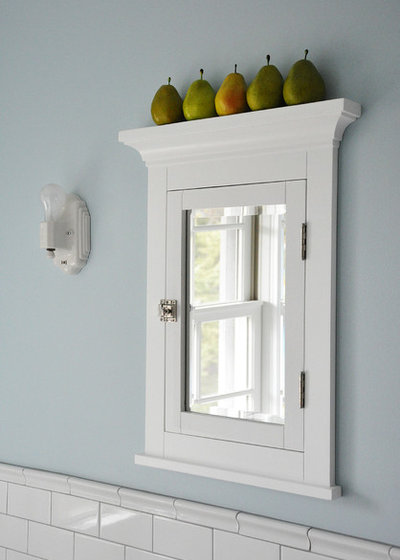

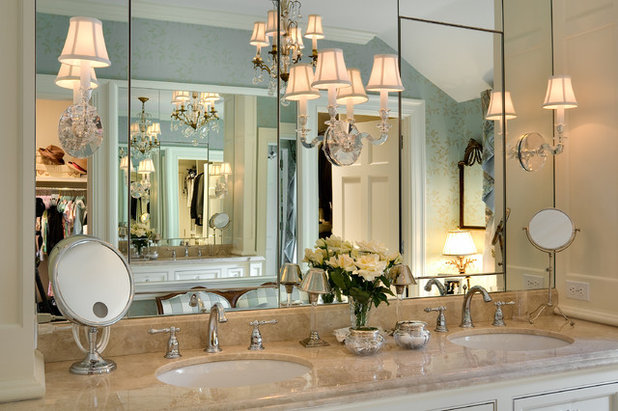
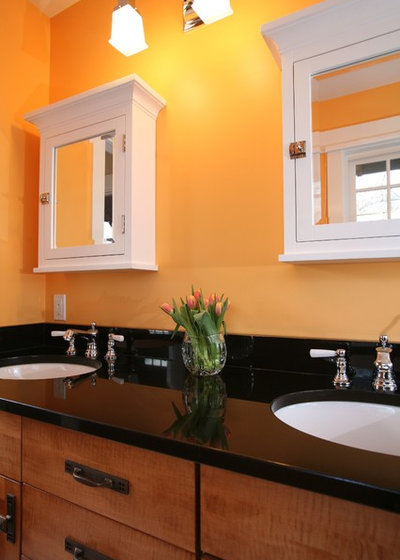
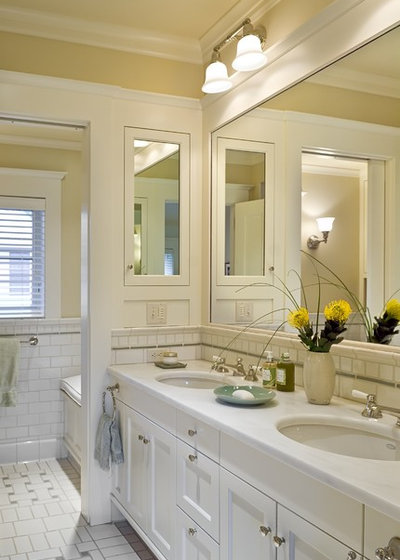
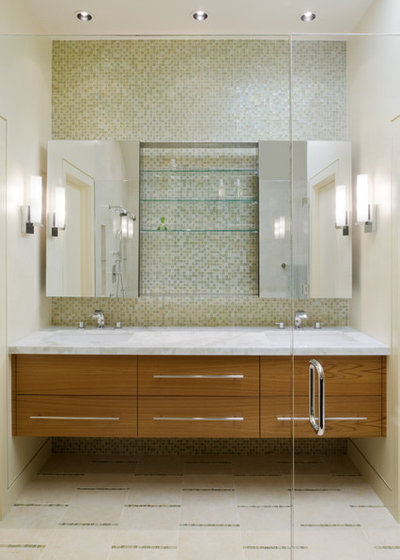
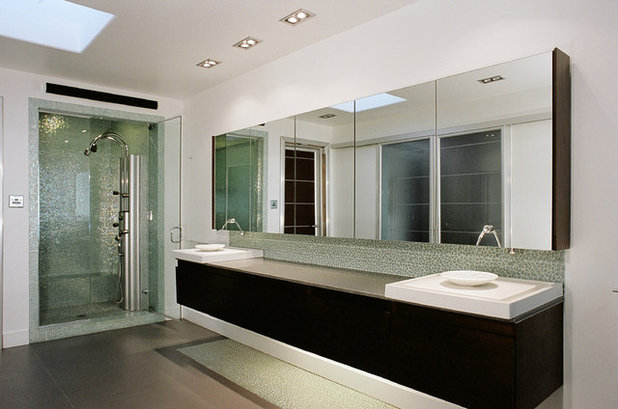
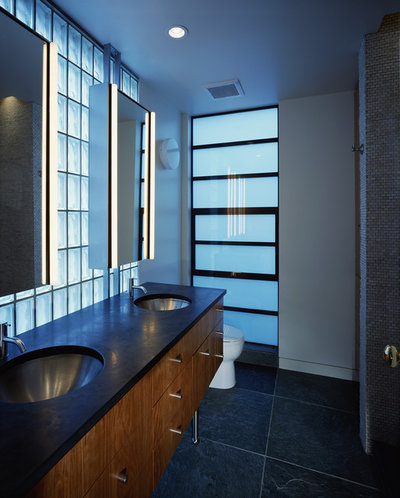
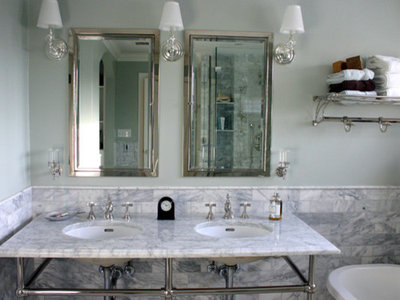
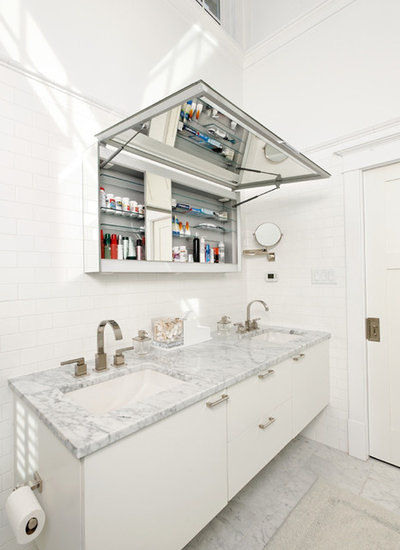
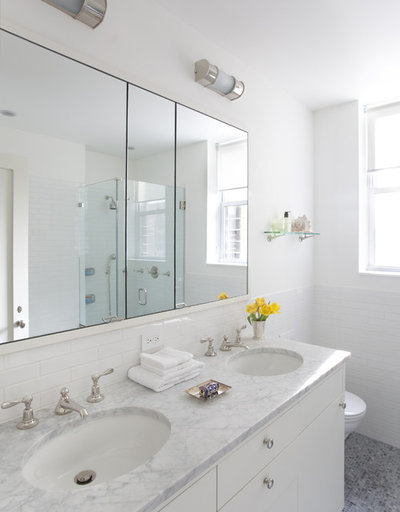
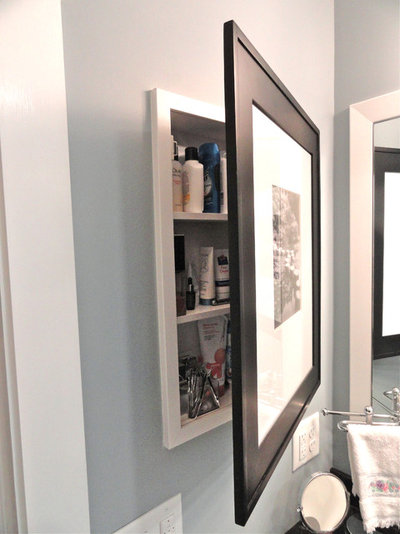
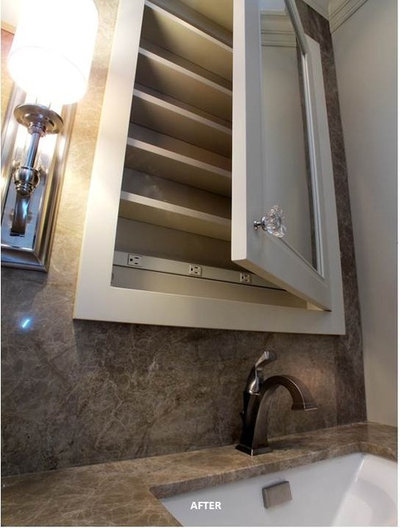
0 comments:
Post a Comment